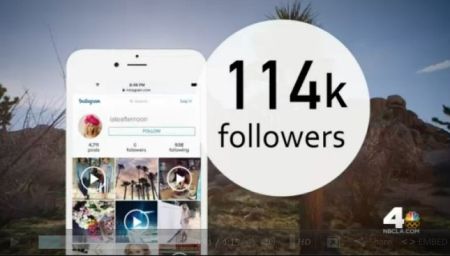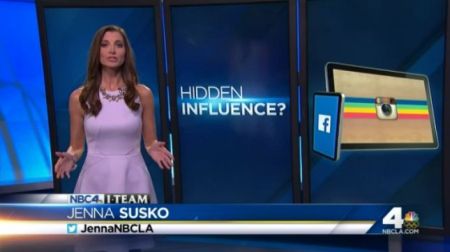Clients invest a significant amount of a public relations budget into a satellite media tour (SMT) and campaign but it can fall apart if they make big mistakes in the planning process. I’ve been producing SMTs for over twenty years so I’ve seen the good, the bad, and the ugly, and have come up with a list of the five biggest satellite media tour mistakes I’ve encountered over the years with tips on how to fix them. These missteps can be easily avoided and turned into successful broadcast media exposure for your brand, product, or service.
#1 – Choosing the Wrong Spokesperson. One of the biggest mistakes I have seen clients make is engaging the services of the “wrong” expert or celebrity spokesperson – usually because they have not vetted them appropriately for the brand or product they are being asked to represent. If the expert or celebrity has no organic connection to the product, then paying them a big piece of your budget to recite message points just because you like the them (or because they have significant name recognition) is a big mistake. The perfect synergy occurs when the spokesperson really likes the brand, believes in the product, and it’s obvious to viewers in their delivery. Always do your due diligence to determine if a celebrity spokesperson makes sense.
#2 – Not Crafting a Message for a Broadcast Style Interview. It’s a common rookie mistake, but I’ve seen savvy publicity specialists do it, too. They take a written press release (or messaging) which is a crafted P.R. piece full of beautiful prose that sings about the product or brand and then fail to make adjustments from the written word to the spoken word. Not only does the message need to be verbally friendly for it to flow organically off the spokesperson’s tongue, but it also has to be structured and formulated in a way to maximize the message for the short time allotted for the broadcast interview (generally two-and-a-half to three minutes).
In addition to the spoken message points, there is often little or no thought given to the visual elements needed to support the story and if these assets exist. Television is a visual medium and producers love great video, photos, and the right product demos to make the interview come alive so it’s not just “talking heads.” Also, with a celebrity spokesperson, stations will want to ask a question or two outside of their spokesperson duties so planning for those questions and incorporating them into the overall timing of the message is imperative. At CMP Media Cafe, we provide complimentary message point scripts for every satellite media tour. Clients and newsrooms love the results.
#3 – Failing to Create a Suggested Script. You’ve prepared an amazing message for your spokesperson but if you don’t provide the stations with a suggested script, you could be courting disaster. Your best opportunity to control the message from the other side of the camera lies in providing a suggested script to the producer. We find that approximately 90% of stations will use our suggested script for SMTs since their schedules are so hectic with day-to-day activities that they value the assistance to structure the segment if it is written in the proper newscast or program style. That’s where CMP Media Cafe excels since we’ve been crafting television segments for over twenty years. The script format includes a suggested anchor lead, suggested questions, suggested anchor tag, along with suggested lower third supers to identify the spokesperson and information on the corporate client who is providing the segment to be FCC compliant.
#4 – Thinking Your Spokesperson Doesn’t Need Media Training. Depending on your spokesperson’s background or expertise, not all media experience is the same. Actors, celebrities, and experts also don’t have experience with the client’s specific messaging so they need to be professionally media trained so that they ace the on-camera interview(s) for the client. And just because they have a show on the air and are “media savy,” does not mean they’re prepared for satellite media tours. Also, nothing will kill your spokesperson’s on-camera credibility more than verbal fossils (i.e. “ah,” “um,” “uh,” “well,” “so,” “you know,” “er,” and “like” ). They are distracting, weaken the message, and frankly, make the spokesperson sound bad. As with other nervous habits, they’re probably not aware that they do them.
Finally, media training just for the client message is NOT the same as media training for broadcast interviews that will work for newsroom producers and that’s why you need to hire a media trainer who’s had control room experience and understands how to tone down client messaging that won’t cause a station to bail on the interview because it’s “too commercial.” We have a blog post on five questions to ask about media training your spokesperson before your next SMT so you should definitely check it out. You’ll want to protect your investment in the SMT and spokesperson to maximize your on-air success and achieve your brand awareness goals by adding media training as part of your overall budget. Fees vary from $3,000 to $10,000 depending on the media trainer, length of the training, and if you are using a TV studio to get your spokesperson comfortable on the set, speaking to camera, and familiar with fielding questions via the IFB.
#5 – Not Leveraging the SMT Media Splash with Marketing and Social Media Campaigns. Unfortunately, the marketing and publicity departments don’t always synergize their campaigns. I’ve been confused about this disconnect for years since it seems like a no-brainer. Most pros know that consumers need approximately seven exposures to a product before they make a buying decision and that comes from many fronts including TV, radio, online, and print. Planning your satellite media tour to coincide with a brand advertising and marketing campaign is the best way to create media buzz. Then leverage online interviews with social media and you’ve created the perfect storm of media exposure And the best part? Editorial interviews from your SMT provide brand credibility that no amount of advertising can buy but the two working together synergistically make a lasting mark in the minds of consumers.
So that’s my list of the five biggest SMT mistakes. To make sure all your “t’s” are crossed and your “i’s” are dotted on your satellite media tour, just follow our checklist.
Peace and coconuts,
Marianne Schwab, Executive Producer, CMP Media Cafe
Follow us on Twitter: @CMP_MediaCafe
Marianne Schwab is the author of The Insider’s Guide to Media Training and the go-to broadcast media expert to show you how to get booked on TV and ace your on-camera interview. Her producer credits include Live with Regis & Kathie Lee, Lifestyles of the Rich & Famous, Runaway with the Rich & Famous, E! Entertainment Television ON E! Specials, and many more. She has worked in broadcast for over 25 years and is currently the Executive Producer for CMP Media Cafe — a company specializing in broadcast public relations where she provides customized media training services for clients.
Copyright © 2017. CMP Media Cafe. All Rights Reserved.








